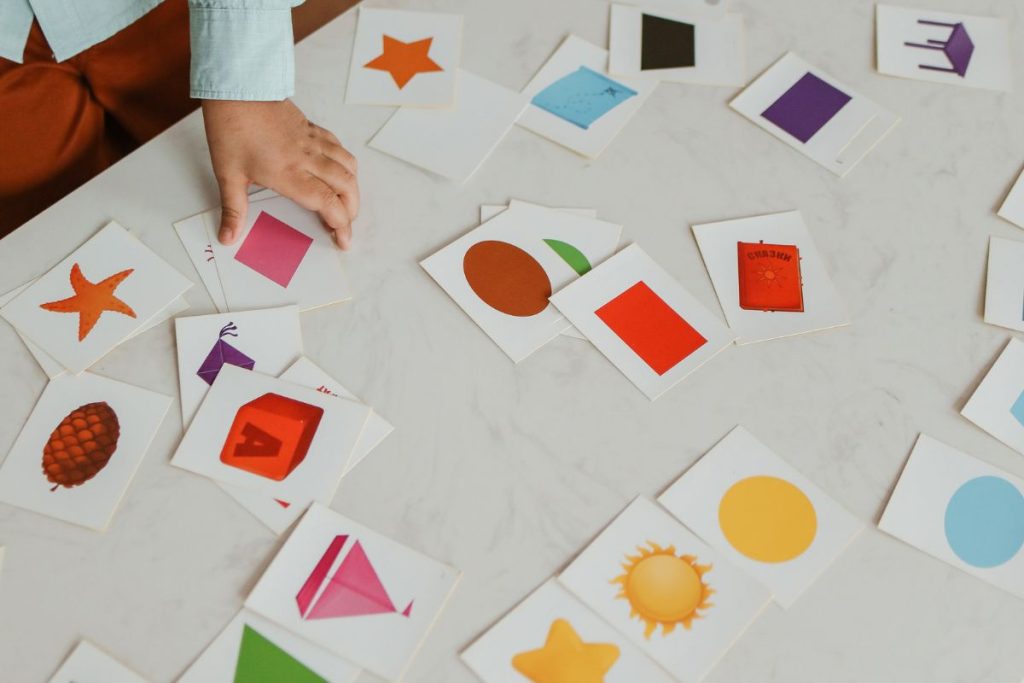Learning about shapes is one of the key stepping stones in a child’s development, especially for Year 2 students. It’s much more than just a simple geometry lesson; it’s a fun and exciting way to connect with the world around us. You’d be surprised how often shapes appear in our everyday lives – in the structure of our houses, the design of our clothes, or even in the patterns of nature. The ability to identify shapes helps children better understand and navigate through their surroundings. It’s like giving them a new lens to view, appreciate, and make sense of the world. In Year 2, children will learn to recognize and describe a few key shapes. So what shapes do Year 2 need to know?
What Shapes Do Year 2 Need To Know?

There are six basic shapes that Year 2 students need to know: squares, rectangles, circles, triangles, hexagons, and pentagons. These shapes form the foundation for all other complex geometric figures. By knowing these core shapes, children can easily identify two-dimensional objects in their environment.
- Circle
- Triangle
- Square
- Rectangle
- Pentagon
- Hexagon
Squares
A square is a four-sided flat shape with equal sides and angles. Children will learn to recognize a square as having four corners, four equal sides, and four right angles. They’ll also be able to draw squares freehand, using their knowledge of equal lengths and perpendicular lines.
Rectangles
A rectangle is another four-sided shape with equal lengths opposite sides but different widths opposite sides. It has two pairs of parallel sides and four right angles. Children will learn to identify rectangles in objects like picture frames, windows, and doors.
Circles
A circle is a shape with no corners or straight lines. It’s recognized by its perfectly curved edge. Children will learn that a circle has only one side, making it a special type of polygon called a “monogon.” They’ll also come across circles in everyday objects like wheels, plates, and coins.
Triangles
A triangle is a three-sided shape with three angles. Depending on the length of its sides and the size of its angles, there are different types of triangles – equilateral, isosceles, and scalene. Children will learn to identify these variations as they explore more complex shapes.
Hexagons and Pentagons
Hexagons and pentagons are five and six-sided shapes, respectively. These two shapes may seem similar to children at first, but they’ll quickly learn to differentiate them based on the number of sides and angles. They’ll come across these shapes in objects like honeycombs, soccer balls, and stop signs.
Practical Ways to Identify and Understand Shapes

Activities to Identify Shapes
Activities are a great way to reinforce the understanding of shapes. These could include fun games, art and craft sessions, or even online interactive games. Here are some ideas:
- Shape Hunt Game: Children are given a chart with the six shapes and are required to walk around the classroom to identify and tick off items that match the shapes on their chart.
- Shape Art: Children can use shape cut-outs to create beautiful collages. This not only tests their knowledge of shapes but also fosters creativity.
- Online Shape Games: With the rise of digital learning, there’s a slew of online games that help children identify and interact with shapes. These games are designed to be fun and educational, promoting learning through play.
Real-life Examples of Different Shapes
Using real-life examples can help children connect with the concept of shapes more intuitively. Here are some examples:
- Squares: Picture frames, tiles, and television screens are some everyday objects that are square.
- Rectangles: Doors, bricks, and books commonly have a rectangular shape.
- Circles: Coins, wheels, and clocks are examples of circles we see daily.
- Triangles: Pyramids, pizza slices, and mountain peaks often exhibit a triangular shape.
- Pentagons and Hexagons: The panels on a soccer ball, a stop sign, and honeycomb cells are examples of pentagons and hexagons respectively.
The purpose of these activities is to make learning shapes an engaging and practical experience for Year 2 students. As they start recognizing these shapes in their surroundings, they will appreciate the beauty of geometry in the world around them.
Application of Shapes

Understanding Shapes in Maths and Other Subjects
Understanding shapes is fundamental to mathematical literacy. In Year 2, children start using their knowledge of shapes to solve problems, such as determining the perimeter of a rectangle or the area of a square.
Additionally, it’s the foundation for learning more complex geometric concepts in higher grades, like volume and surface area of three-dimensional figures. In subjects like art and design, children use shapes to explore creativity, while in science, recognizing shapes can help in understanding patterns and structures in nature.
Role of Shapes in Creativity and Imagination
Shapes play a crucial role in fostering creativity and imagination. Children often start their creative journey by drawing simple shapes to represent real-world objects.
For instance, a child might use a square and a triangle to draw a house, or circles to sketch a face. This exercise enhances not only their creative skills but also their problem-solving abilities and spatial recognition.
As children grow, they use more complex combinations of shapes in their drawings and designs, showcasing their improved understanding of shapes and their creativity.
The Power of Shapes in Daily Life
- Shapes in Art: Shapes are the building blocks of art and design. Children can create a wide range of art pieces by combining different shapes. This activity enhances their creativity and understanding of shapes.
- Shapes in Architecture: Many buildings and structures are based on geometric shapes. A simple example is a house, usually represented by a square or rectangle for the body, and a triangle for the roof.
- Shapes in Nature: The natural world is full of shapes. For example, a honeycomb is made up of hexagons, while many flowers form circular shapes.
The understanding and recognition of shapes help children to interpret and appreciate the world around them. It gives them a new perspective to view their surroundings and allows them to discover the beauty of geometry in everyday life.
Read more: How To Teach Shapes to Toddlers the Montessori Way
What Do Toddlers Learn From Matching Shapes?
Conclusion
In conclusion, by Year 2, children should have a good understanding of basic shapes such as squares, rectangles, circles, triangles, pentagons, and hexagons. These shapes are fundamental building blocks not just in mathematics but also in understanding and interpreting the world around them. Parents and teachers can assist by incorporating fun, interactive classroom activities, and using real-life examples to make learning shapes more engaging and relatable. Remember, learning shapes should not be confined to the classroom. Encourage children to identify and discuss shapes they come across in their daily lives, fostering an appreciation for geometry and its ubiquitous presence in our world.
